Spotted Lanternfly: Future Threat
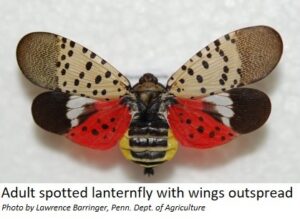
If you thought emerald ash bore is a menace, you’re right. However, there is a new invader making its way to Wisconsin from the east coast and this one could be even worse called Spotted lanternfly (SLF). Because these invaders have not yet been reported in Wisconsin, but they are definitely moving this way, it is extremely important to immediately report any sighting.
Because lanterfly has been devastating Pennsylvania and surrounding states for several years, a number of myths are showing up on the internet.
The adult lanterfly prefers to feed on grapevines (Vitis vinifera) and tree of heaven (Ailanthus altissima), which is itself an invasive species. Nymphs have a wider range of hosts. They will feed on:
- Grapes and hops, both emerging as high-value agricultural crops in Wisconsin
- Roses and other important ornamental nursery crops
- Hardwoods – including maple, walnut, willow, and poplar – important to the state’s logging and paper industries
Their extraordinary reproduction rate, ability to spread and wide range of host plants make SLF a threat to wineries, orchardists, gardeners and forest owners across Wisconsin.
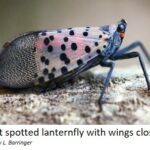
Spotted lanternfly look very different, depending on their stage of life. Adults lay egg masses on a variety of surfaces, sometimes tree trunks, but you can find them of walls, or pretty much any vertical surface. It is easy to remove the egg masses, if you can reach them. Use a putty knife to cleanly scrap up the mass and deposit it into a bottle containing either rubbing alcohol or hand sanitizer.
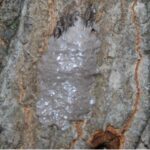
Lanternfly eggs hatch and have two nymph stages prior to their adult flight form.
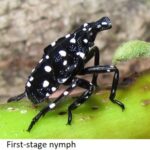
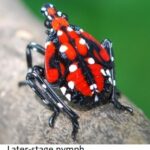
First stage nymphs are black with white speckles. Second stage nymphs are modeled black and red with white dots.
